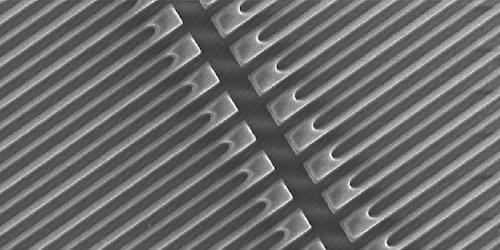Hunting for lightweight dark matter particles requires detectors with much lower signal thresholds than traditional experiments. This requirement has prompted novel detection techniques, including probing the faint interactions that occur between sub-MeV particles and electrons. In a 180-hour-long experiment, Yonit Hochberg of the Hebrew University of Jerusalem and her colleagues demonstrate a device that distinguishes hypothetical sub-MeV dark matter from background noise with record sensitivity [1]. Their experiment places the strongest constraints yet on interactions between lightweight dark matter and regular matter.
Hochberg and her colleagues etched an array of nanowires in a 7-nm-thick tungsten-silicide film to produce a superconducting nanowire single-photon detector, a sensor that is sensitive to extremely small energy inputs. When energy above some threshold is deposited on a superconducting nanowire, the wire briefly becomes a regular conductor, resulting in a voltage pulse.
The team circulated a fixed current through their device and sealed it in a light-tight box for 180 hours. They counted four voltage pulses, each corresponding to a deposited energy of at least 0.73 eV. Absent any other detectable energy source, these dark counts could be attributed to cosmic-ray-generated muons or high-energy particles excited by radioactive decay.
